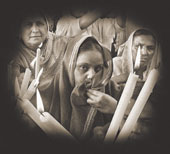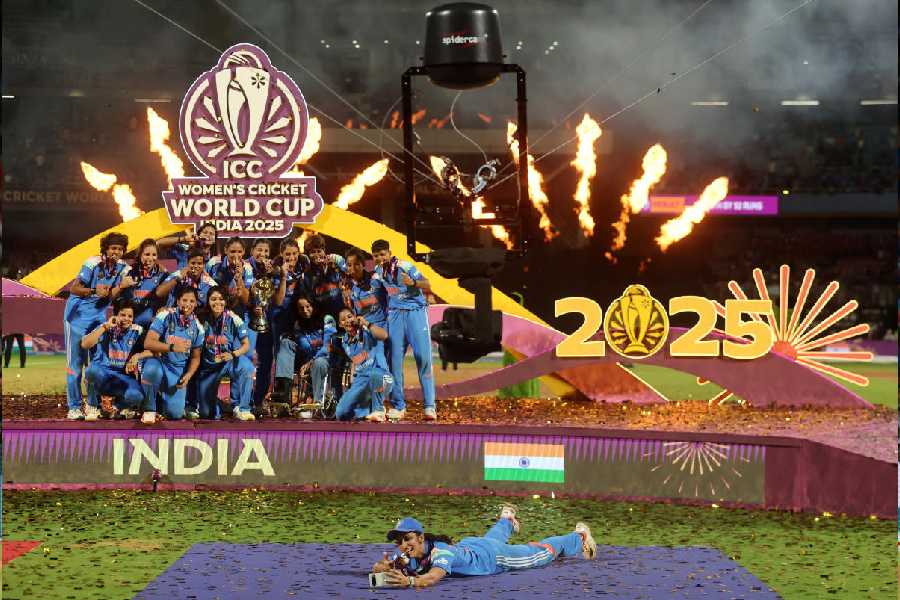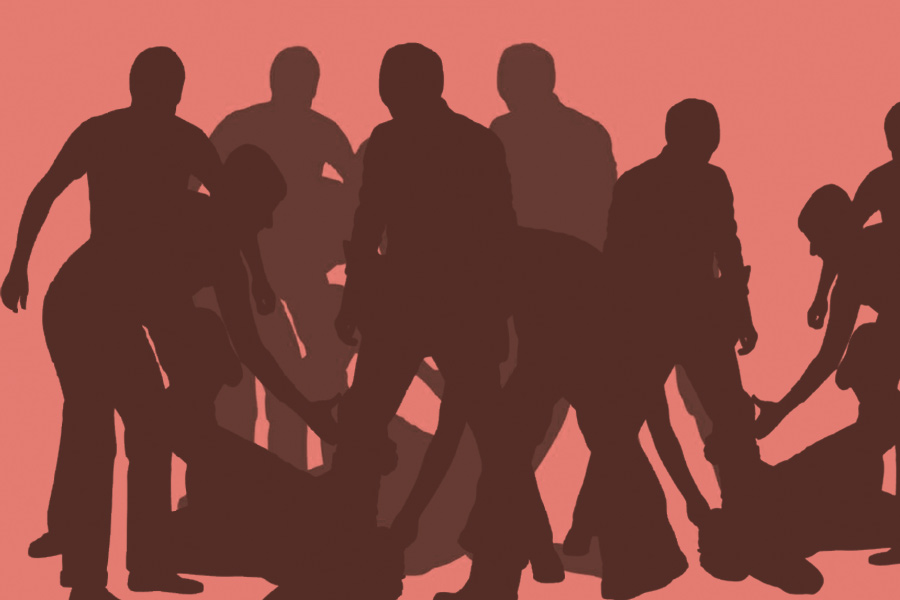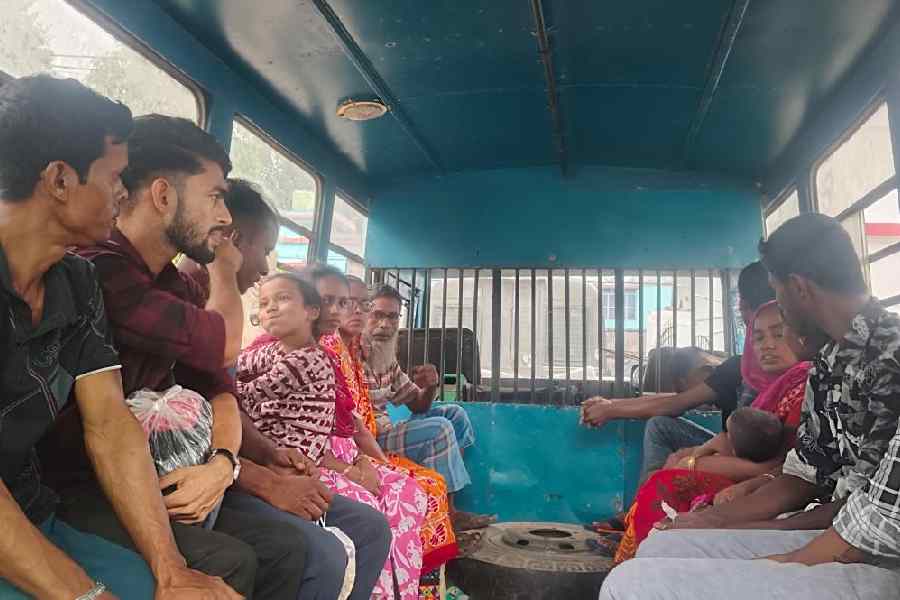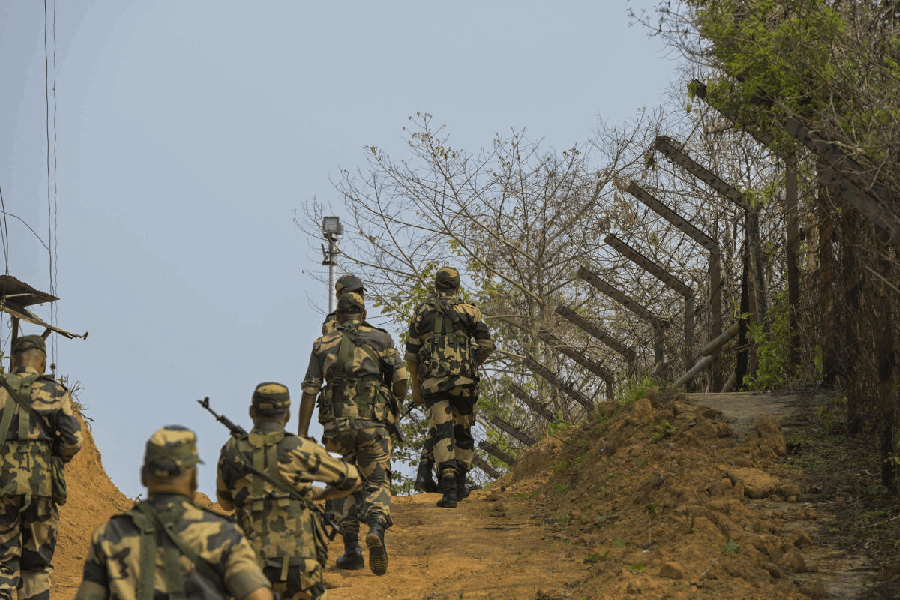 |
| IN MEMORIAM: Women in Ahmedabad paying homage to the victims of the Gujarat riots |
Shaheen peddles away furiously, urging her cycle to go faster. She can’t wait to get to the ‘centre’, and meet her colleagues and friends. She has a smile on her face and a job that supports her family. What she values most though, is her Himmat.
Once there, Shaheen gets busy with her work. Himmat has just received a large order. The centre’s products range from bags and jholas to tops and sarongs. And the workers, like Shaheen, are mostly victims of the 2002 anti-Muslim riots, in which several hundred people were killed in a spate of violence that rocked Gujarat for months.
Behind a pile of bags and skirts, there is a painting on the wall ? of Shaheen cycling. “It’s been a long journey,” she says, in between quick gasps for air. “I did not have the confidence to even talk properly before Himmat happened.”
Shaheen used to live a peaceful life in Naroda Patiya, outside Ahmedabad, till February 28, 2002. The worst-affected locality in the violence, Naroda Patiya saw over a hundred deaths in the first three days of the mayhem that followed the burning of a train in Godhra on February 27. Shaheen was among the many women who lost everything ? from their husbands to their homes ? in the violence.
Shaheen and some of the other widows were relocated in September that year to Faizal Park in Vatwa, a district on the outskirts of Ahmedabad, by a committee of local builders called the Citizens’ Relief Committee. For a while, it seemed as if things were going to look up.
Within five months, though, the despondency was back. The widows had no means of livelihood, but families to support. Though many of them had been given compensation, most had spent their money to settle debts incurred after the violence.
Few of them had worked outside their homes ? so seeking employment was not an easy task. One of the widows used to work in a factory in Patiya, a couple of others would do piece-rate stitching work at home.
The rest had been completely dependent on the incomes of their husbands. And Vatwa, which was itself badly affected in the violence, was too far from Ahmedabad for any of them to get work. All the relocated Patiya women had sewing machines which some NGOs ? such as the Self Employed Women’s Association (SEWA) ? had donated to them after the carnage. But only a couple of them knew how to operate these.
Gradually, the women realised that their problems were similar ? they required work but didn’t have any skills to earn decent wages. Some of them had started to get stitching work but were paid abominably low rates ? Rs 1.50 for stitching a salwar; Rs 30 for stitching 1,000 jute bags. They couldn’t earn more than Rs 20 to Rs 30 a day and this work too wouldn’t come by regularly.
That was when the idea came ? to collectively learn sewing, stitching and embroidery, and market their own products. It was a bold step, activists and volunteers helping the violence-affected community in Vatwa point out, for the women had no experience to speak of.
“There was no financial support from either the government or from NGOs for the women and their plans,” says Monica Wahi, who was earlier working with the relocated women of Patiya.
The women faced resistance from within the local community, too, for several men were against an initiative that took women out of their homes for work. “The women were becoming more and more assertive and wanted to take control of their lives. This scared some men,” adds Wahi.
Risking possible isolation from their own community, 16 of the women went ahead and formed Himmat ? Shaheen had suggested the name, an Urdu word for courage ? on May 1, 2003. Wahi and other volunteers pitched in. Some money came for their training from a few individuals and an NGO called the Singh Foundation.
Seven months after it was launched, Himmat graduated into a production centre. Their first order came from Vividha, an organisation working in Kutch with the victims of the 2001 Bhuj earthquake.
Two years ago, the women of Himmat stepped out of their homes and their state to take part in the World Social Forum (WSF) in Mumbai. Their products were on display and sale, and much to their amazement, nearly all the 800 pieces that the women had prepared for the WSF were picked up by the participants.
“The success in Mumbai made us really believe in ourselves,” says Shaheen. “We wanted to show the world that in spite of all that we went through, we would keep fighting for a dignified life.”
Following the WSF success, orders started coming in from various outlets and organisations, such as Oxfam Gujarat and the Ahmedabad Women’s Action Group. Himmat also sends its products to a few outlets in Delhi and Mumbai. It has also held several successful exhibitions of their products in educational institutes in New Delhi and in Bangalore, Goa, Baroda, Rajkot and Surat.
Today, the women earn about Rs 100 per day. They take back a minimum of Rs 60 a day ? and there are occasions when they earn even beyond Rs 200 per day.
Himmat too is no longer confined to the 16 who started it. Confident of their abilities, some of the original group-members have moved on to find work in factories or elsewhere. And, meanwhile, other women from Vatwa have joined the centre.
But the women of Himmat believe that economic emancipation is not all that they have got from their centre. Over the years, they hold, they have also realised the need to stand up for their rights as women.
Mehbooba Bibi of Himmat says the turning point was possibly the case of Bibi Bano, a key witness in one of the Patiya cases and one of the active members of Himmat. Bano was burnt alive by a man she’d refused to marry. Having received a significant amount of compensation money, Bano felt the man was after her for her money and had spurned his repeated marriage proposals. The local community refused to speak out for the dead woman, as many felt she had behaved “inappropriately” for a widow.
Bibi Bano was killed for just being sensible,” says Mehboob Bibi. “But we realised that while multiple relationships are allowed for men, if women even talk to another man, they face ostracism. In such a scenario, at least we women should oppose this unfair social relationship,” says Mehboob Bibi.
So, Himmat has been looking at different aspects of a woman’s life. Wishing to be mobile, many women had long wanted to learn how to ride a cycle or a two-wheeler. Last November, it organised a cycle-riding drive ? an effort that saw the participation of several women from Vatwa.
Now, a legal intervention cell ? to cater to the needs of women residing in Vatwa ? is on the top of Himmat’s agenda. “They want to hire a lawyer who will sit and discuss their problems with them,” says Wahi.
Considering the obstacles the women have so far overcome, little, it seems can stop them from achieving their dreams.
Four years ago, Shaheen and her neighbours watched helplessly as mobs destroyed the lives they had carefully built.
Helpless? Not any more.

